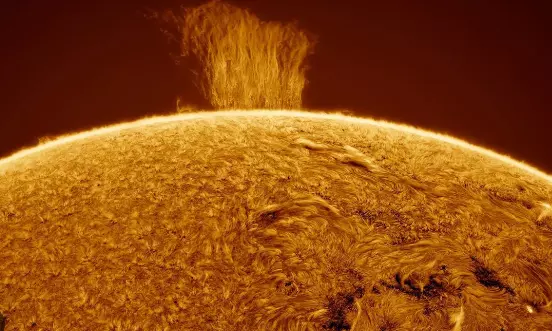
Astronomer clicks 60,000 mile tall plasma 'waterfalls' on Sun
text_fieldsBuenos Aires: An astronomer from Argentina has clicked a structure on the surface of the Sun that looked like a plasma waterfall, NDTV reported.
Eduardo Schaberger Poupeau, the astrophotographer, clicked the picture of the Sun with the structure on March 9. An enormous wall-like structure of plasma could be seen falling down toward the Sun’s surface, LiveScience reports.
The picture was clicked using specialised camera equipment. Poupeau said that the plasma wall rose some 100,000 km (62,000 miles) above the solar surface. This means the height of the wall is equal to nearly eight Earth stacked on top of one another.
He said that the phenomena looked like hundreds of threads of plasma were dripping down a wall.
However, other reports suggested that such scenes are common on the Sun and have been reported many times before. They frequently appear in the form of rings around the Sun’s poles. They are also called “polar crown prominences (PCP).
LiveScience, the science news website, says that PCPs are like normal solar prominences, which are loops of plasma or ionised gas ejected from the solar surface by magnetic fields. They occur near the Sun.s magnetic poles at latitudes between 6o and 70 degrees North and South. According to NASA, this PCPs collapse back towards the Sun’s surface due to the stronger magnetic fields in the poles. Because of this collapse back, they are nicknamed “plasma waterfalls”.
A NASA blog post says that when Earth have Northern Lights, the Sun’s ovals are filled with “dancing sheets of Plasma”.
According to Space.com, the speed of the falling plasma is around 22,370 mph.











